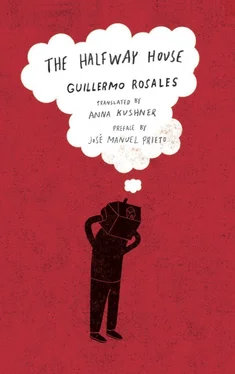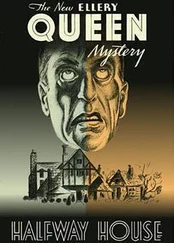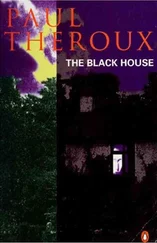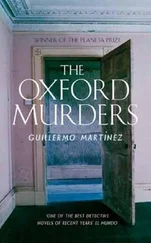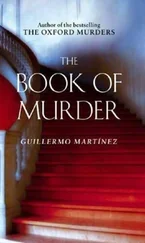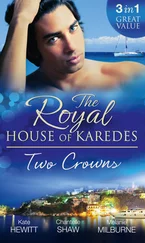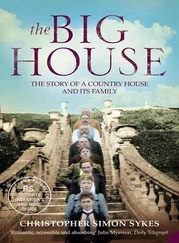Figueras knows he is guilty (always in the sense previously pointed out, that of someone who took an active and enthusiastic part in the inevitable cruelty of the revolution), but hasn’t found redemption. He joins “mafia” forces with Arsenio and at one point towards the middle of the book, he comes to recognize: “I’ve gone from being a witness to being complicit in what happens in the halfway house.” Every once in a while, he is visited by his friend, el Negro , a poet with whom he discusses literature, and in his free time, pierced by desire, he flips through pornographic magazines: the author wants to tell us that his character is not entirely dead.
And then Frances appears: “There’s a new crazy woman sitting in front of the set. She must be my age. Her body, while cheated by life, still has some curves.” She is a woman who is still young, but more importantly, “the new crazy woman” has not lost her humanity and Figueras perceives this instantly. The revelation of this detail in the book is masterly: the woman trembles when Figueras approaches her for the first time and inspects her unscrupulously. Frances, like himself, is completely conscious of the halfway house’s sordidness. She’s not “crazy,” rather, she’s “shipwrecked” like Figueras, and he feels immediately attracted to her.
Figueras goes back and forth between tenderness and cruelty. On two occasions, he starts to strangle the woman to the point of asphyxiation, making her black out. Frances offers no resistance to the torture because she confesses herself broken, “dead inside,” and is the only one who, like him, understands her own guilt, the terrible duality of her condition. And this shared guilt is the basis for their understanding each other. During their first walk around Little Havana, already as a couple, they talk about it. “My angel,” Frances asks him, “were you ever a communist?” “Yes,” Figueras responds. “Me too,” Frances affirms. And in the scene that immediately follows — heart-rending because of its profound meaning and its symbolic location inside the “big, gray” arcade of a Baptist church — both of them chant an anthem “from the early years of the Revolution.” The two seem to be saying, yes, we had a past in the Revolution, we believed in it, we chanted anthems and slogans, we were part of its terrible machinery.
It’s surprising that this moment has gone unremarked by almost all critics. We stand before what can be considered the book’s neurological center. Everything stems from here, its importance, its very genesis. Because once the guilt is understood, they turn to art to redeem themselves, to leave testimony of the past.
Which is what makes this book great, imbuing it with deep human significance. Rosales, like no other Cuban author before him, knew how to leave behind the narrow road of victimhood for the larger, more arduous one of full responsibility. He looked deep into the tragedy and found himself to be part of it. This is his truth, the important discovery that the book brings to us: we are all responsible, all of us, in one way or another we took part in it, were small pieces, no matter if unconsciously so, of that great oppressive machine. He must, then, communicate his discovery, put it into words. Hence the importance of literature for his character, the conversations he holds about his literary idols: Hemingway, Truman Capote. Hence the fact that Figueras arrives at the asylum with a book of English poets: literature is the tool for the great task he sees before him, that of leaving a truthful and blunt testimony of the Hell that is the halfway house, but above all, and most significantly, of his past as part of the great machinery.
Yet one obstacle presents itself: the experience of that existence within “history,” within the nature of the totalitarian phenomenon, is of such utter otherness that it ends up being virtually untranslatable. It’s a recurring complaint in the literature written by exiles, survivors of totalitarianism. The problem appears in Milan Kundera, Joseph Brodsky, in Alexander Solzhenitsyn himself. It’s an impediment that makes them feel they cannot be saved. “Nobody understands,” Frances confesses at another key moment of the book upon speaking of the years lived in Cuba, during the euphoria of the Revolution: “I tell my psychiatrist and he just gives me strong Etrafon pills.”
It thus requires the talent of a great writer to articulate this, the tenacity of an artist who views this task as the great goal of his life, although he proclaims himself beaten from the very beginning: “The house said ‘Boarding Home’ on the outside, but I knew that it would be my tomb.” Once there, however, he will fight to leave his mark; he knows he is lost, but he will leave his testimony. To his endless surprise, Figueras discovers that Frances is also an artist. She draws and does it so well that he is amazed when she shows him the drawings she has been making of the asylum’s inhabit- ants: “It’s done in the style of primitive artists. It’s very good …, Everything is exact. It also breathes its own life … She’s really good! She has captured all of our souls.” Exactly the feat of the memoirs of Primo Levi (another suicide like Rosales), exactly the feat of Varlam Shalamov’s powerful Kolyma Tales , and of every artist survivor. In art the unnamable tragedy acquires a voice and is vanquished. The artist fights to leave his mark, knows he is lost, but will allow the victims to speak in his book.
Which is how the novel closes with such majestic force — the moment in which the possibility of conquering fate scintillates: the couple makes plans, they opt for believing in a miracle to get them out of there. Figueras imagines himself living with Frances like a normal man: “If she weighed a few more pounds and took better care of herself, she’d be pretty.” He feels so certain of success that during the walk he takes, once he and Frances have agreed to leave the halfway house, he fraternizes with unknown people in the streets and, to his great luck, runs into a neighbor from his childhood in Cuba. Figueras knows he is saved and the tone of the story changes: “As I pass by Pepe … I take his bald head in my hands and kiss it … I burst out laughing.”
Finally, the dream of escape is dashed, but it’s no longer entirely tragic for Figueras. Not only did he find love, he also found a person like himself who was purified by repentance, who has achieved moral regrounding.
Very little is known about how an unknown author like Guillermo Rosales came to be the writer of excellence who appears here, the possessor of a unique style and the author of what is, without a doubt, one of the best Cuban books of the second half of the twentieth century, comparable only to the mythical Carlos Montenegro’s Men Without Women or Reinaldo Arenas’ famous memoir Before Night Falls (adapted for film by Julian Schnabel in 2001). Although Rosales practiced journalism in Cuba and always considered himself a writer, between the year of his arrival in Miami and the fateful morning of his suicide, there was very little in the public eye that stood out in terms of literature. While still in Cuba, Rosales had had a brush with fame or perhaps the hope of better luck for his work with El juego de la Viola , a novel which was a 1968 finalist in the prestigious “Casa de las Américas” contest. He did participate, along with the now internationally known Reinaldo Arenas, in one of the most interesting cultural project of the 1980s, the Revista Mariel (1983–1985). In it, Rosales published the only interview he gave while alive and in which, besides discussing his double exile — from Miami’s petit bourgeois and from revolutionary Cuba — he makes a very revealing clarification about his characters that confirms the reading I propose here and that places the condemnation of the ravages of totalitarianism as the central theme of this novel. His characters, Rosales says, “are Cubans affected by Castro’s totalitarianism, human wrecks.”
Читать дальше
